The Wanderer, Mt Cory in Banff
Oct 7, 2024
Parking:
- Backswamp Viewpoint Parking: Located on the Bow Valley Parkway. Note that this road is closed during certain months in summer, so plan ahead.
Approach:
- From the parking lot, the trail is on the opposite side of the road.
- Initially, Saskia and I mistakenly followed a bolt on a wall straight ahead, but The Wanderer is further to the left.
Route Considerations:
- During this time of year, it’s crucial to choose climbs carefully due to the weather. Some routes may remain cold if they don’t get direct sun exposure.
- I originally considered climbing Aftonroe, but my colleagues recommended The Wanderer, and I quickly agreed, despite some misguidance in the guidebook.
- Finding the first pitch was trickier than expected due to the limited pictures in the guidebook. After some confusion, we mistakenly climbed up to a ledge where the second pitch of Sea of Dreams begins. Realizing our mistake, we had to rappel down from the anchor of Sea of Dreams before finally locating the start of The Wanderer, which was further to the left.
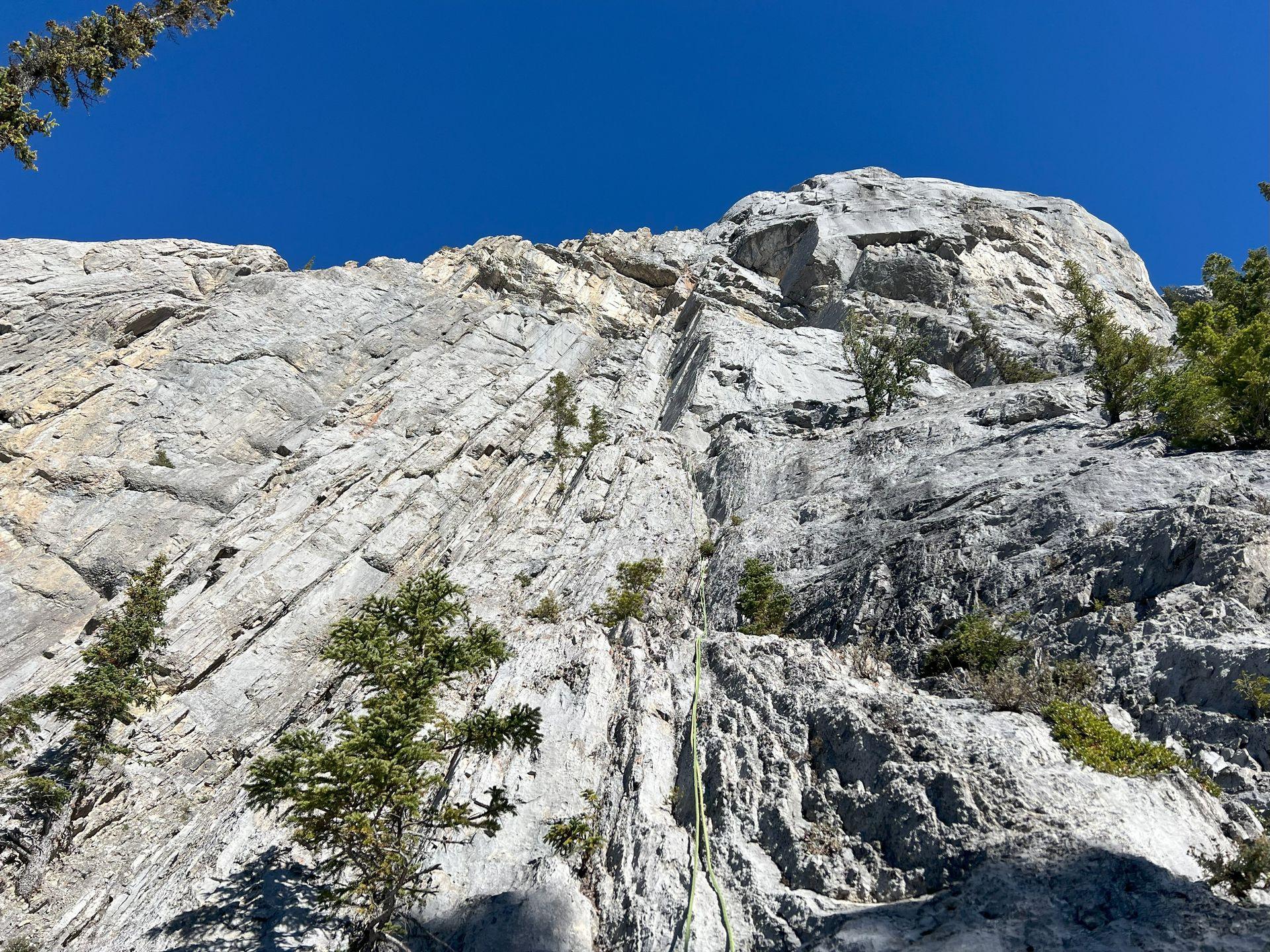
Rappel down on Sea of dream
Start of The Wanderer
The Climb:
- It took us around 7 hours from car to car. All pitches are well bolted, and the rappel anchors have chains for descending.
Pitch Breakdown:
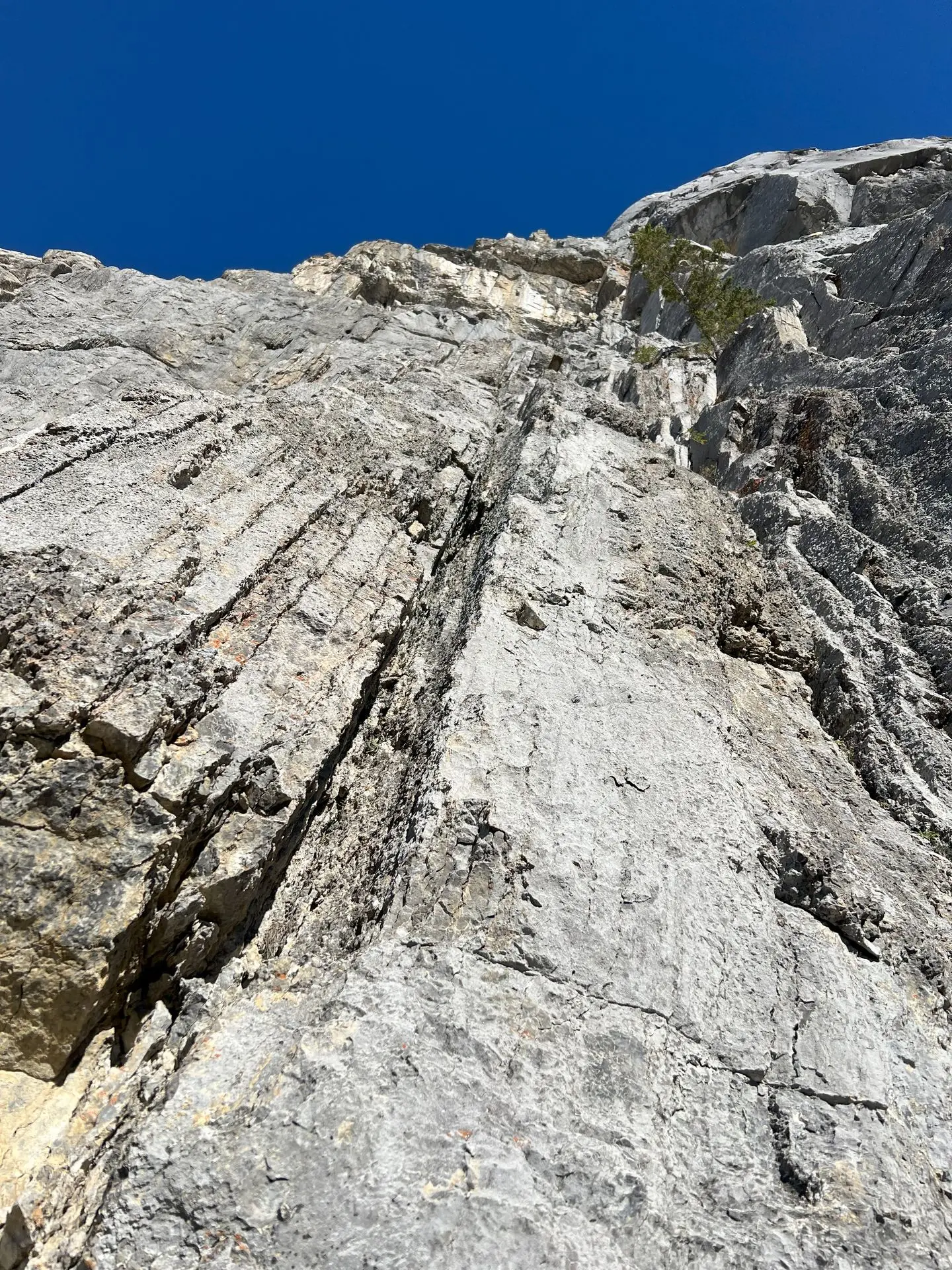
Pitch 1 (5.7):
A fun arete climb with short laybacks and stemming moves. The challenge is finding the right position to commit without getting tired.
Pitch 2 (5.7):
Saskia led this one. One run-out section, but otherwise good hand and foot holds throughout.

Pitch 3 (5.9):
A technical pitch with rests to figure out your direction. It involves underclinging, traversing under a roof, and slight overhangs. I had to rest near the end after attempting a tough layback, but the correct beta made it easier.
Pitch 4 (5.9):
At first, we were unsure which route was ours because the climb on the left seemed harder than the one on the right. However, after double-checking the guidebook, it became clear that we needed to head left.
Saskia began leading, but the first two bolts were quite run-out, and even though she didn’t find the moves too difficult, she decided it was better for me to lead. I approached the first bolt differently than she did by going further left, climbing it more like a dihedral, which made the moves significantly easier for me.
The whole pitch needed to be climbed with dihedral techniques, and there were moments where I struggled to find the right position. Holding the dihedral stance was challenging at times, and I found myself getting tired, especially around the third and fourth quickdraws. I asked Saskia to give me some time to rest at these points.
What made this pitch tricky was the delicate balance required for the dihedral—choosing the right positions for hands and feet while staying relaxed to conserve energy. By the time I reached the top of the pitch, the climbing eased off, allowing me to finish with more confidence.
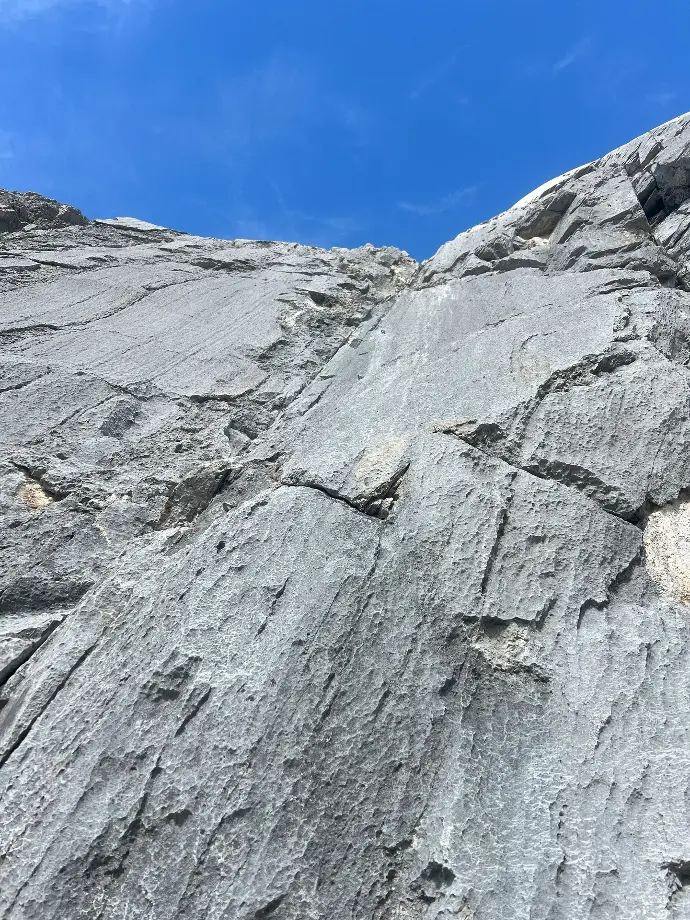

Pitch 5 (5.7):
Saskia enjoyed leading this one. Well bolted with great hand and foot holds. It’s a thoughtful climb that requires patience.
We stopped at the first anchor, though the route continues right to the top. We ended up doing a short sixth pitch due to not realizing how brief the next section was.
First bolt The Wanterer pitch 4
Saskia climbing pitch 3
Leading Pitch 4
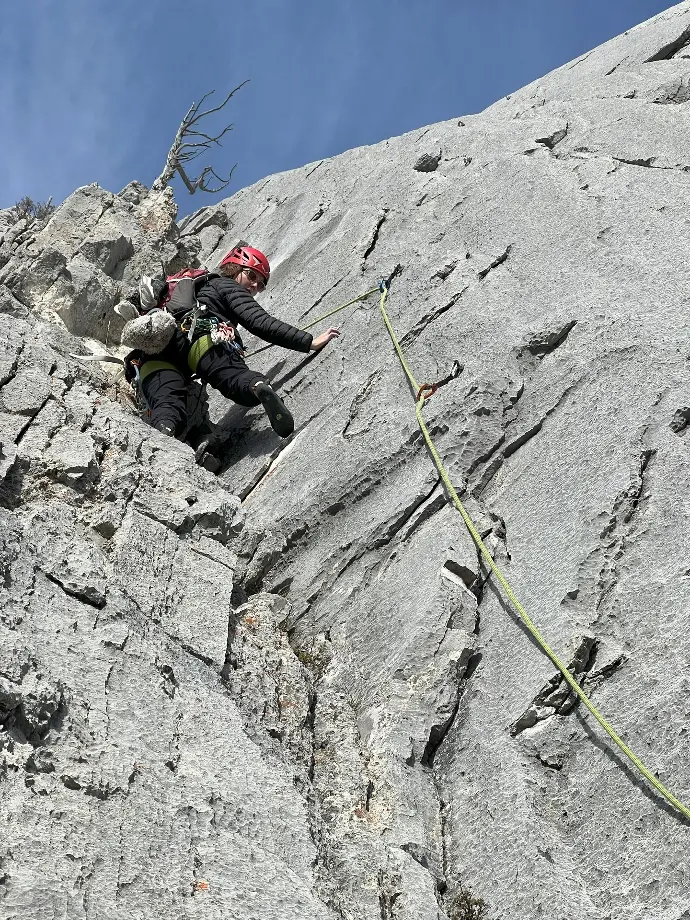
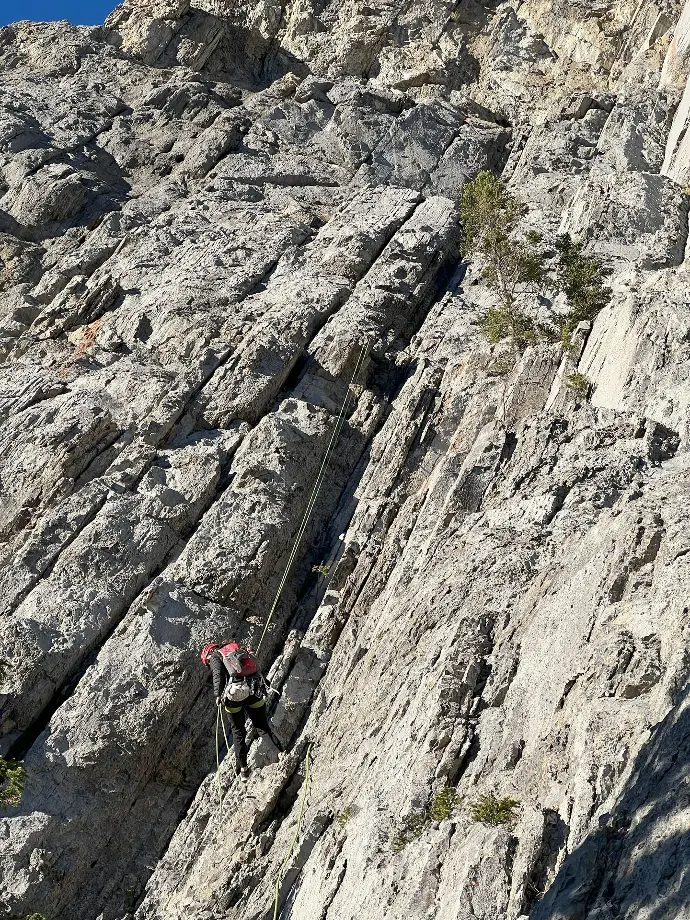
Descent
We rappelled down the route, linking pitches 6 and 5 with an 80m rope, which allowed us to avoid the scramble section that is before the first pitch.
In the end, The Wanderer was a very interesting and enjoyable climb. Every pitch offered something engaging, with fun moves throughout. Despite our initial confusion, the route finding and approach were relatively straightforward, making it a great experience from start to finish.